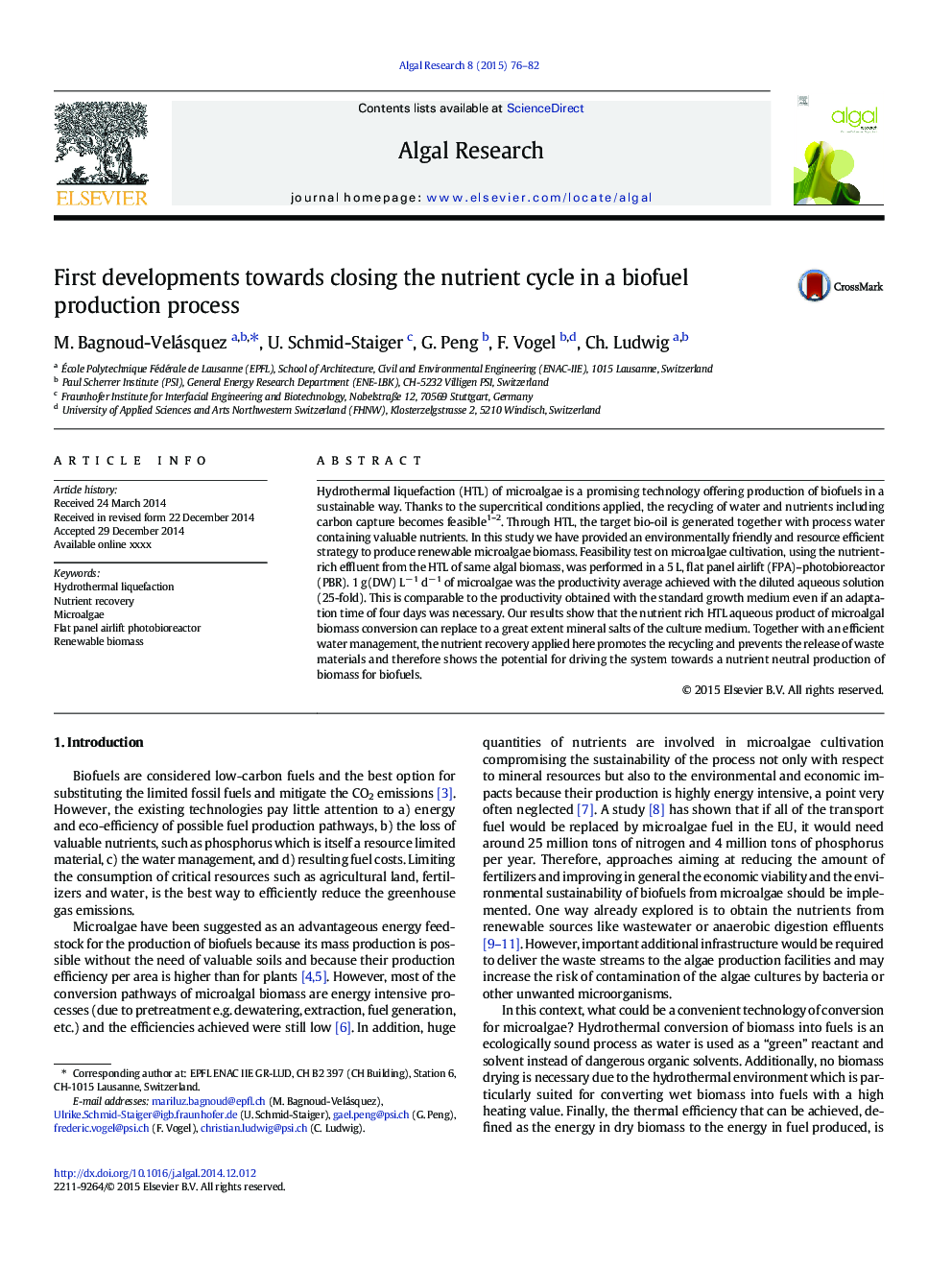| Article ID | Journal | Published Year | Pages | File Type |
|---|---|---|---|---|
| 8088397 | Algal Research | 2015 | 7 Pages |
Abstract
Hydrothermal liquefaction (HTL) of microalgae is a promising technology offering production of biofuels in a sustainable way. Thanks to the supercritical conditions applied, the recycling of water and nutrients including carbon capture becomes feasible1-2. Through HTL, the target bio-oil is generated together with process water containing valuable nutrients. In this study we have provided an environmentally friendly and resource efficient strategy to produce renewable microalgae biomass. Feasibility test on microalgae cultivation, using the nutrient-rich effluent from the HTL of same algal biomass, was performed in a 5 L, flat panel airlift (FPA)-photobioreactor (PBR). 1 g(DW) Lâ 1 dâ 1 of microalgae was the productivity average achieved with the diluted aqueous solution (25-fold). This is comparable to the productivity obtained with the standard growth medium even if an adaptation time of four days was necessary. Our results show that the nutrient rich HTL aqueous product of microalgal biomass conversion can replace to a great extent mineral salts of the culture medium. Together with an efficient water management, the nutrient recovery applied here promotes the recycling and prevents the release of waste materials and therefore shows the potential for driving the system towards a nutrient neutral production of biomass for biofuels.
Related Topics
Physical Sciences and Engineering
Energy
Renewable Energy, Sustainability and the Environment
Authors
M. Bagnoud-Velásquez, U. Schmid-Staiger, G. Peng, F. Vogel, Ch. Ludwig,
